HUNTING METEORITES IN THE DESERT SOUTHWEST
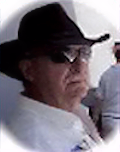
lowjiber (John)
Over the years, I've been blessed with plenty of chances to detect in several states. Whether it's been the Atlantic or Pacific coastal waters, old home sites, parks, or sidewalks, I've had plenty of chances to hone my detecting skills and meet a lot of nice folks along the way.
Moving to a desert environment three years ago provided an opportunity to experience a different kind of detecting...meteorite hunting. Chasing the elusive meteorites required me to learn a whole new set of skills and the use of a few new tools. I thought I'd share some my experiences dealing with extreme heat, dangerous creatures, and "meteor-wrongs".
Meteorites hit the earth every day. Right? Yes, they do. However, the opportunity to find them is orders-of-magnitude greater in a desert environment than any other. Simply stated, the desert does not have forests, farmlands full of crops, or vast city areas covered with asphalt and concrete. For example, the Maine Geological Survey reports that only five meteorites were discovered in their state in the twentieth century. Compare that with the desert areas of Arizona and Nevada where literally thousands are found each year.
The desert is simply a vast, uncluttered wasteland. It is common to spend an entire day in the desert without seeing another soul. Cell phone signals are mostly non-existent, which opens another can-o-worms for those, like me, who want to ensure emergency help is available when necessary.
Wife In Dry Lake Bed In Nevada
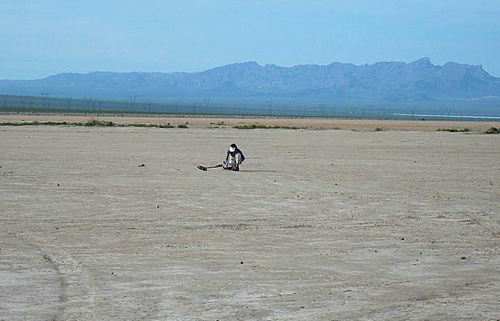
Let's cover a few of the hazards that the desert meteorite hunter encounters...
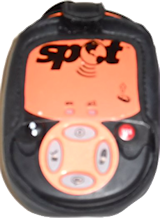
I mentioned cell phone signals earlier. My wife uses Verizon, and I use Sprint. Both provide excellent coverage in the southwest. However, in the majority of the desolate desert, one might as well not even try to use a cell phone. We use a Spot GPS Messenger. This simple looking device uses geosynchronous satellites to provide medical assistance (Ours is set up for helicopter evacuation.); tracking service (It will send the latitude/longitude of your location to rescue personnel with a push of a button.); and even send an e-mail containing the Google Earth picture/location to a list of friends, etc. I won't head deep into the desert without one.
The heat in the desert is a major limiting factor. Temperatures from late May to early October average about one hundred and ten degrees. Couple that with low humidity and intense sunlight and you have a recipe for heat stroke. Obviously, proper dress and plenty of water are essential. However, on those rare days that I want to hunt during the summer months, I leave home well before sunrise to arrive at sunrise and only stay until about ten o'clock.
With the exception of desert locations fairly close to the highway, a four-wheel drive vehicle is necessary. You don't need a Wrangler like I drive, and a two wheel pickup truck will serve you well at many dry lakebeds, etc. However, when you're really serious about meteorite and gold (Oh, did I forget to mention gold? Yep, it's there too.) hunting you need a good four-wheel drive vehicle. Desert washes (Oh, did I forget to mention flash floods? Yep, we have those too.) are no place to take my wife's Mercedes.
When I lived in the mountains of northern California, I hunted along several long abandoned, narrow-gauge railroad tracks dating back to the early 1920's that wind through the Redwood forests. It was not uncommon to come across one of the seven varieties of rattlesnakes that call California home. A careful eye, common sense, and reasonable caution will usually keep you from harm. Rattlesnakes will warn you with their rattle and leave you alone if you simply back off to a better route.
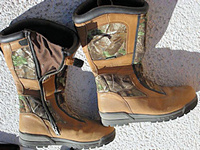
However, in the desert southwest (Mojave) we have a different, dangerous "critter"...the Mojave Green Rattlesnake. Look it up. It's seven percent more deadly than a Diamondback and is very aggressive...they will literally come after you. Along with normal rattlesnake precautions, snake boots are a necessity. Additionally, desert hunting will often take you into small washes where the terrain is higher than a snake boot can offer bite protection. The answer to that dilemma is to wear "gaiters"...snake proof "chaps" that cover your entire leg up to your crotch. They're hot and a bit uncomfortable, but another necessity in my humble opinion.
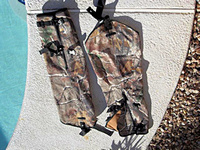
I'll add here that my wife and I both carry revolvers loaded with "snake rounds" to give us an edge against an overly aggressive Mojave Green Rattlesnake. I've heard that it's illegal to shoot them...too bad.
There are other "critters" that make the desert their home...scorpions, spiders, etc. However, common sense when reaching under rocks or bushes pretty much eliminates the danger. Besides, you can stomp a scorpion.
So, where and how do you hunt meteorites? You ask.
The first thing we did was learn about meteorites...what do they really look like, etc. We researched the web extensively and printed various articles concerning them. We purchased several books with glossy color pictures about meteorites and their characteristics. The most useful book is entitled: Field Guide to Meteors and Meteorites". It's available through Amazon, and should be required reading for anyone interested in this aspect of our hobby.
Another interesting resource is the Meteorite-List Digest. It is an excellent resource that is delivered (free) to your e-mail box about every other week. Anyone can contribute anything about meteorites, from new finds, educational articles, and meteorites for sale. I recommend it, even if you never hunt a meteorite in your lifetime. To sign up, just go to: Meteorite Central and you're hooked up.
You're thinking, what do meteorites look like? They look like rocks...no pun intended. They come in a vast variety of shapes and sizes, depending on the type of meteor that deposited them and how long they've been on earth. More about this later.

Meteorites share a couple of common traits though. They are heavy...much heavier that most rocks of a similar size. They're highly attracted to a magnet...one of your best tools to supplement your detector. Stone meteorites all contain nickel...something that earth rocks very, very seldom have. I'll expand on these a bit later.
Hopefully, you wouldn't go searching for a Mercury dime in a park built in 2001. You'd do a little research beforehand to determine locations that have a good chance of finding old coins. Well, meteorite hunting is the same way. I often like to hunt a dry lakebed for falls that have recently occurred. It's pretty easy really, as they're sitting right on top and can be found by driving around slowly and paying close attention...you'll see the Meteorite Men on TV doing that a lot. However, the highest percentage of success comes from locating and hunting a "strewn field".
When a meteor enters the atmosphere, it begins to burn. As it gets closer and hotter, there is a point where it starts coming apart and depositing pieces (meteorites) along its path. That elliptical shaped path that is often several miles long and up to a mile wide is called a "strewn field". The strewn field is to meteorite hunting like an old homestead is to the detectorist hunting for old coins. A strewn field can contain a few dozen meteorites to several thousand, depending on the characteristics of the meteor and other factors. The stony meteorites that are deposited usually display a "crust" that has resulted from the burning entry. Metal meteorites often display what are called "thumbprints"...areas of the surface that have melted and cooled during landing. Metal meteorites also form a patina on the crust from oxidation over time.
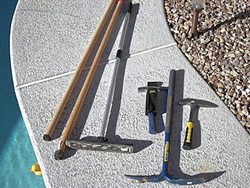
The strewn field that I hunt is in northwestern Arizona and was deposited twelve million years ago...it covers about one hundred and fifty square kilometers. Meteorites are named based on where they're found, and this field is known as "The Gold Basin Field". The meteorites in this field are classified as L4 Chondrite Stony Meteorites. (The crust described above has pretty much vanished due to erosion.) Thousands of registered meteorites have been recovered from this field, most in the last fifty years...pickings are much more rare now. (Darn it!)
When hunting for meteorites, the most amazing thing is that they're still mostly on top of the ground. We found five small ones last year and four were on top of the ground. That's a good thing because digging in the rocky, dry desert soil is pretty tough...a Lesche won't get you far when compared with a good rock pick.
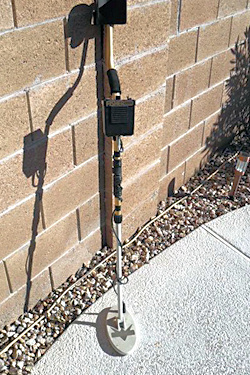
From a detector standpoint, just about any detector will work because of the large iron content in even stony meteorites like the L4 Chondrites. My first two seasons, I stuck with the Vision because of its ability to distinguish gold. My wife uses the MXT. However, last year I discovered an older Gold Bug II (the 71kHz version) that was still brand new...in-the-box. It's much lighter than the Vision and is much more sensitive to gold due to its high operating frequency. The main "weapon" for meteorites remains the rare earth magnets attached to a long walking stick. As I mentioned, you'll see the Meteorite Men driving around simply scanning the flat areas for newly fallen meteorites, but you'll often see them with a detector and/or a magnet on a stick. "Whatever works" is my motto.
Regarding gold, I usually only look for tiny pieces of the shiny stuff in the dried washes that populate the desert landscape. The Gold Basin of Arizona is littered with old abandoned mines...most of which have been hunted to death. However, flash floods from mountain rainstorms can really move a lot of water (and a small amount of gold). The technique is much the same as looking for good panning places in the streams feeding the Columbia River in northern California...except the water has gone. We don't find much. Last year, I only recovered 27 grams (slightly under one ounce). It's still fun though.
I guess the last thing to discuss is how to identify a real meteorite from a "meteor wrong". If you've watched the Meteorite Men on TV, you've undoubtedly noticed that even they have a hard time with some finds. They take them to the meteorite lab at the University of Arizona for electron microscope examination. They almost have to do that because they sell and trade meteorites, so verification must be "official".
When we return from the desert with three or four "candidates", we've already made sure they pass the first test...strong attraction to magnets. The next step is to cut a very small, flat piece off the end and expose it to a nickel test. If it fails the nickel test, it's not a meteorite. Nickel test kits are often sold in drug stores, as many people are allergic to nickel in watch backs, etc. They're also available on the Web for around $20.
Cutting a small piece may seem daunting and it certainly can be. We belong to a rock and gemstone club here in Vegas that has all of the equipment necessary to make quick, accurate work of the task.


If the magnet and nickel tests prove fruitful, you have found a meteorite. The last thing we do is to highly polish the cut end for examination under a microscope (not the electron type). The patterns of metallic "flecks" are fascinating to say the least. Using your field guide, you can usually confirm the "type" of meteorite you've found.
We just finished moving, and our meteorites (none larger than a golf ball) are buried in a box "somewhere" in the storage shed. When I dig them out (no pun, that), I'll post some follow-up pictures on the forum. Meanwhile, I'm enclosing a few pictures to give you an idea of what meteorite hunting in the desert southwest is all about.
Oh, by the way...the Gold Basin Field was featured on an edition of Meteorite Men last year.
The area of the Gold Basin Field extends past the Bureau of Land Management desert landscape and into the Lake Mead National Recreation Area (LMNRA). Detecting is absolutely not allowed within the boundary of the LMNRA. However, the Meteorite Men got special permission to film a hunt there...accompanied by a LMNRA official. Life is good if you're famous.
|